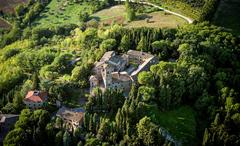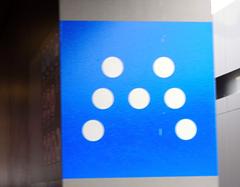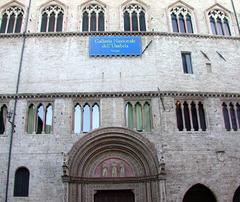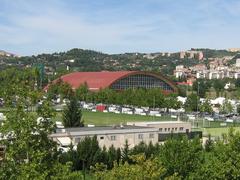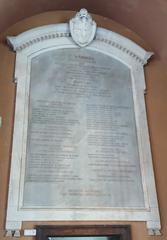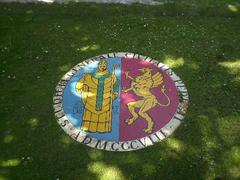
Stadio Renato Curi Visiting Hours, Tickets, and Perugia Historical Sites Guide
Date: 03/07/2025
Introduction: The Significance of Stadio Renato Curi
Stadio Renato Curi, located in the lush Pian di Massiano district just outside Perugia’s historic center, is a cornerstone of Italian football culture and a vibrant hub for the local community. Built in 1975 to accommodate A.C. Perugia Calcio’s ascent to Serie A, the stadium was originally known as Stadio Pian di Massiano. Its rapid construction—completed in just three months—mirrored the city’s sporting ambitions and need for a larger, modern venue. In 1977, following the tragic on-pitch death of midfielder Renato Curi, the stadium was renamed in his honor, becoming a living memorial that resonates deeply with fans and Perugians alike (Wikiwand - Stadio Renato Curi, Wikipedia - Stadio Renato Curi).
Today, Stadio Renato Curi melds functionalist 1970s architecture with ongoing modernization initiatives, maintaining a capacity of roughly 20,000-23,000 seats. It remains the beating heart of A.C. Perugia Calcio, hosting league matches, international fixtures, youth tournaments, and community events. The stadium’s accessibility is a priority, featuring dedicated facilities and services for visitors with disabilities.
With seamless connections via Perugia’s Minimetrò and bus lines, and situated near attractions such as the Rocca Paolina fortress and Galleria Nazionale dell’Umbria, a visit to Stadio Renato Curi offers a multifaceted experience—blending sport, history, and local culture (AC Perugia Calcio, Perugia Tourism Official Site).
This guide provides comprehensive, up-to-date information on visiting hours, ticketing, amenities, accessibility, travel tips, and surrounding attractions, ensuring prospective visitors can plan confidently and fully enjoy one of Umbria’s most iconic landmarks.
Contents
- Stadium Origins and Construction
- The Legacy of Renato Curi
- Architectural Features and Evolution
- Role in Italian Football
- Visiting Hours, Tickets, and Accessibility
- Getting There and Nearby Attractions
- Events and Matchday Experience
- Renovations and Future Prospects
- Practical Visitor Tips and FAQs
- Sources and Further Reading
1. Stadium Origins and Construction
Stadio Renato Curi was born from Perugia’s football renaissance in the 1970s. When A.C. Perugia Calcio earned promotion to Serie A in 1974, the existing Stadio Santa Giuliana could no longer accommodate the growing crowds. The city commissioned architect Luigi Corradi to design a new stadium in the then-undeveloped Pian di Massiano district. The project was ambitious: it was completed in just three months, with an original capacity for 28,000 spectators, signaling Perugia’s arrival on the national football stage (Wikiwand - Stadio Renato Curi).
2. The Legacy of Renato Curi
On October 30, 1977, during a Serie A match against Juventus, Renato Curi—Perugia’s dynamic midfielder—suffered a fatal heart attack on the pitch at age 24. The tragedy deeply affected the city and the wider football community. The stadium was soon renamed in his honor, becoming a memorial and a symbol of the connection between the club, its players, and its supporters (Wikipedia - Stadio Renato Curi). The event also spurred broader conversations on athlete health and safety in Italian sports.
3. Architectural Features and Evolution
Designed in a functionalist style, Stadio Renato Curi comprises two main stands along the pitch and open curves at each end. Prefabricated concrete allowed for rapid, durable construction. Over the years, renovations have improved seating, lighting, and accessibility, while ongoing projects aim to further modernize and seismically reinforce the structure (TifoGrifo).
Current sectors include:
- Tribuna Ovest (West Stand): Main, covered stand with VIP and press facilities.
- Curva Nord: The passionate heart of Perugia’s supporters, currently undergoing major roof and comfort upgrades.
- Curva Sud: Away fans and general seating, with modernization underway.
- Gradinata: Lateral stands, also slated for improvements.
The stadium’s integration into the city has increased over time, benefiting from nearby public transport, parking, and green spaces.
4. Role in Italian Football
Stadio Renato Curi has hosted some of Perugia’s greatest footballing moments, including the club’s unbeaten 1978–79 Serie A season. It has also welcomed the Italy national team for several matches, further enhancing its national stature (Wikiwand - Stadio Renato Curi). The venue supports youth and women’s football, community tournaments, and educational activities, reinforcing its importance to regional sport (AC Perugia Calcio).
5. Visiting Hours, Tickets, and Accessibility
Visiting Hours
- Match Days: Gates typically open 90 minutes before kickoff.
- Non-Match Days: Guided tours may be available by appointment; check the official A.C. Perugia Calcio website for updates.
Ticketing
- Purchase Channels: Online via the club’s website, authorized ticket offices, or stadium box office on match days (subject to availability).
- Pricing: Ranges from €10 (Curva) to €40 (Tribuna Ovest VIP) for most league matches; discounts for children, seniors, and families.
Accessibility
- Designated seating and restrooms for visitors with disabilities.
- Ramps and elevators for barrier-free access.
- For specific assistance, contact the club in advance (AC Perugia Calcio).
6. Getting There and Nearby Attractions
Transportation
- Minimetrò: The “Pian di Massiano” terminal is a short walk from the stadium, linking to Perugia’s main railway station and city center (Umbra.org, MetroEasy).
- Bus: Multiple lines serve the district, with extra services on event days.
- Car: Ample parking is available adjacent to the stadium.
- Walking/Bike: The stadium is set within a large park, making it accessible via pedestrian and cycling paths.
Nearby Attractions
- Perugia Historic Center: Medieval streets, museums, and piazzas.
- Rocca Paolina: Panoramic fortress with underground tours.
- Galleria Nazionale dell’Umbria: Renowned art museum.
- Pian di Massiano Park: Green spaces, jogging paths, and markets.
7. Events and Matchday Experience
The Curva Nord is famed for its intense, coordinated support, creating an electrifying matchday atmosphere. Official merchandise, food, and drinks are available both inside the stadium and in the surrounding area. The stadium also occasionally hosts community events and integrates with city festivals, such as the Umbria Jazz Festival (Porta Perugia Events).
8. Renovations and Future Prospects
A major renovation project began in early 2025, focusing on safety, comfort, and modernization—beginning with the Curva Nord and extending to other sectors. During works, some areas may be closed or have reduced capacity; always check current information before purchasing tickets (TifoGrifo). The project underscores the city’s commitment to preserving the stadium’s legacy for future generations.
9. Practical Visitor Tips and FAQs
Arrive Early: To avoid queues and soak in the atmosphere, arrive at least an hour before kickoff.
Weather: Some sectors may be exposed—check forecasts and dress accordingly.
Payment: Most outlets accept cards, but have cash for smaller vendors.
Language: Basic Italian is helpful, though staff generally assist in English.
Family-Friendly: The stadium is welcoming, with designated family areas.
FAQ
Q: What are Stadio Renato Curi’s visiting hours?
A: Primarily open on matchdays (gates open 90 minutes before kickoff); guided tours may be available by appointment.
Q: Where can I buy tickets?
A: Online at the A.C. Perugia Calcio website, at authorized offices, or the box office on matchdays.
Q: Is it accessible for disabled visitors?
A: Yes, with designated seating, ramps, and accessible facilities.
Q: Are tours available?
A: Guided tours may be offered by appointment; check the club’s website for details.
Q: How do I get there?
A: By Minimetrò, bus, car, or on foot from the city center.
Q: What nearby sites can I visit?
A: The historic center, Rocca Paolina, Galleria Nazionale dell’Umbria, and Pian di Massiano Park.
10. Sources and Further Reading
- Wikiwand - Stadio Renato Curi
- Wikipedia - Stadio Renato Curi
- Official A.C. Perugia Calcio Website
- Perugia Tourism Official Site
- TifoGrifo: Stadio Renato Curi Renovations
- Umbra.org: Navigating the MiniMetrò
- MetroEasy: Perugia MiniMetrò
- Porta Perugia Events
Final Thoughts
Stadio Renato Curi is a dynamic emblem of Perugia’s identity—bridging rich football traditions, architectural evolution, and community values. Whether you’re attending an electrifying match, exploring local culture, or discovering nearby historical sites, the stadium offers an authentic and memorable experience. Stay updated via the official A.C. Perugia Calcio website and consider downloading the Audiala app for real-time guides and event updates.


